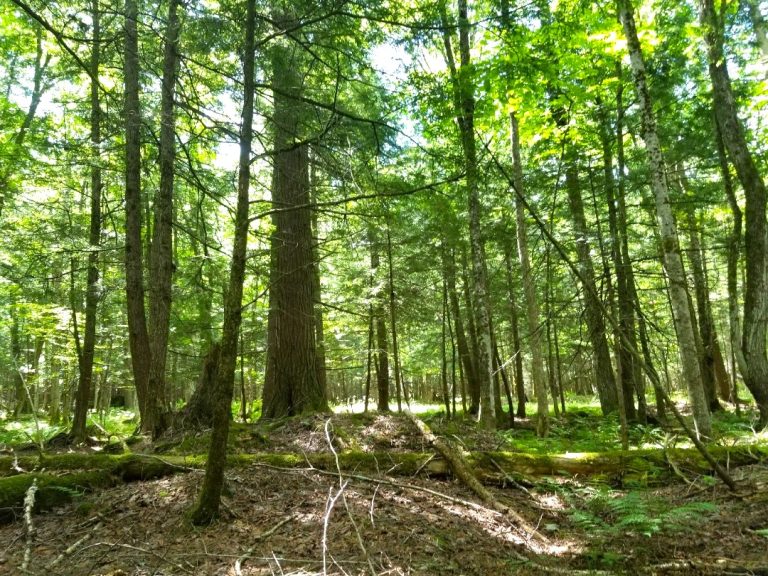International Bat Night : August 28, 2021

DISCOVER THE BAT :
Insectivorous champion, fragile and essential to our ecosystems
A favourite species of Halloween nights and bloody vampire stories, bats have unwillingly earned a bad reputation. However, this small animal, which fascinates with its unique physiognomy and its ability to orient itself through sound waves, deserves to be appreciated and above all, protected.
That’s what eight local conservation organizations want to convey as part of International Bat Night, which will take place on August 28, 2021, with activities running regionally through September 11.
“There is still a long way to go in terms of acceptance of this little-known animal,” says Louis Lazure, biologist at the Granby Zoo and a bat enthusiast.
In Quebec, there are eight bat species: the Tri-coloured Bat (Perimyotis subflavus), the Big Brown Bat (Eptesicus fuscus), the Little Brown Myotis (Myotis lucifugus) the Northern Myotis (Myotis septentrionalis), the Eastern small-footed Bat (Myotis leibii), the Red Bat (Lasiurus borealis), the Silver-haired Bat (Lasionycteris noctivagans), and the Hoary bat (Lasiurus cinereus). Of these, three are at risk of extinction: the Little Brown Myotis, the Northern Myotis and the Tri-coloured Bat.
“Several factors affect the different bat species in Quebec,” explains Mr. Lazure. “The main causes are habitat loss, the use of pesticides, human disturbance and the arrival of white-nose syndrome, an exotic disease from Europe that appeared in North America in 2006,” he adds.
The stakes involved in the survival and well-being of bats are high. In addition to contributing to biodiversity, bats in Quebec help eliminate several insects harmful to agriculture and support the reduction of the use of pesticides. It is estimated that their insectivorous diet could save the agricultural sector $3.7 billion per year in North America.
PUTTING A STOP TO THE STEEP DECLINE OF BATS
Among the projects aimed at restoring the bat population on our territory, one was initiated by Appalachian Corridor in 2019. The study’s goal is to inventory eight bat hibernacula present in the region to better understand the habitat range of the species and determine local threats.
The data collected is shared with the Ministère des Forêts, de la Faune et des Parcs (MFFP) and helps to guide conservation and site development actions, promote the eventual protection of the natural habitat of bats, and reduce causes of mortality.
In addition, Appalachian Corridor and the Granby Zoo are collaborating on another initiative to increase the number of safe habitats conducive to the preservation of bat populations on the territory. The two organizations have installed different types of dormitories, some of which are even heated, to provide nesting opportunities for local bat populations. While this project provides sympathetic habitats for the animals, the objective is also to gain knowledge about the colonies (species, size, sex, function) that use the man-made dormitories, as well as understand the optimal characteristics for dormitories by comparing occupied versus unoccupied types.
“Beyond the specific sites where bats find refuge, habitats with a diversity of natural features including water, mature trees, and forest are essential to meet the needs of bats,” tells Mr. Lazure. “With our partners Appalachian Corridor and the Nature Conservancy of Canada, we are actively working on this by including bat inventories in the ecological assessment of conservation projects,” he adds.
CALLING ON THE PUBLIC TO PROTECT BATS
There are opportunities for the public to contribute to bat protection efforts. Mr. Lazure particularly advocates protecting known colonies, whether in dwellings, caves or artificial dormitories, to allow bats to survive. In addition, the public is invited to share their bat observations at chauve-souris.ca. “It’s your best source of information and advice online about this fascinating animal,” says Lazure.
FREE CONFERENCES!
Biologists from Granby Zoo and Appalachian Corridor invite you to learn more about bats by participating in an educational and interactive conference!
Join us for a lecture combined with a nature walk to spot bats!
- Conference with field trip on September 2, 2021 (6:30 pm to 9 pm), in Magog, at the Centre d’interprétation du Marais
- Guided outing on September 11, 2021 (7:00 pm to 10:00 pm), at les Boisés Miner in Granby
Places are limited and registrations are required by clicking here.
SHOW YOUR SUPPORT FOR BATS AND YOU COULD WIN!
As part of the regional awareness activities surrounding International Bat Night, the public is invited to submit a comment on a special bat feature that fascinates them on the Granby Zoo or Appalachian Corridor Facebook pages before midnight on August 29. All submissions will be entered into a raffle to win two day passes for the Granby Zoo!
EIGHT REGIONAL CONSERVATION ORGANIZATIONS JOIN FORCES TO BENEFIT SPECIES AT RISK
In 2019, Appalachian Corridor was awarded more than $1 million over four years by the Government of Canada to help protect species at risk in the Northern Green Mountains region of southern Quebec via the Community-Nominated Priority Places for Species at Risk initiative.
In order to increase the positive impact of the investment for species at risk, Appalachian Corridor has created a unique regional working group, which is composed of environmental organizations from different backgrounds: Réseau de milieux naturels protégés, Conseil de gouvernance de l’eau des bassins versants de la rivière Saint-François, l’Organisme de bassin versant de la Yamaska, Fondation SETHY, QuébecOiseaux, Conservation de la Nature Canada, and the Granby Zoo.
These organizations are proud to participate in the promotion of the International Bat Night to support species monitoring efforts in our region.


